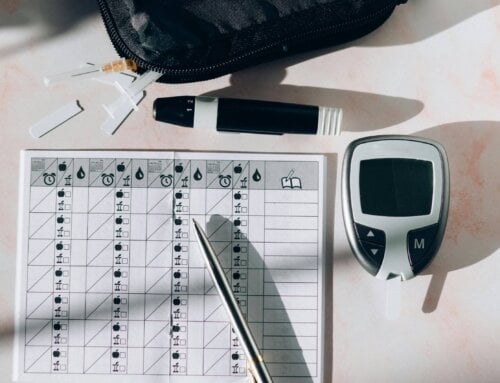Gestational diabetes is a common complication of pregnancy that affects around 200,000 women in the United States a year which translates into 4-10% of pregnancies. According to the most recent research “5 in 100 women will come back with a positive test for gestational diabetes”. Most women have little or no symptoms although some may experience the typical signs of diabetes including fatigue, thirst, hunger, increased urination and blurry vision.
Since gestational diabetes usually resolves within hours of the delivery it does not receive the discussion or education that surrounds type 1 or 2 diabetes. Blood glucose testing is done right after the baby is delivered; the mother may have a repeated glucose tolerance test 6-12 weeks after delivery to be sure the diabetes has dissipated. 50% of women with gestational diabetes will later develop type 2 diabetes within 7-10 years if life style is not changed. Unlike gestational diabetes, type 2 does not resolve but it can be controlled. Let’s look at some interesting information concerning gestational diabetes.
- What is gestational diabetes?
During pregnancy the placenta which attaches your baby to your blood supply produces high levels of several hormones. This is needed for the baby but these hormones may cause insulin resistance or the inability to utilize the existing insulin efficiently for the mother. This promotes an increase in blood sugars especially after meals. The baby continues to grow which causes more hormonal release and less ability to control the blood sugars. Gestational diabetes generally develops during the 24-28 week of pregnancy. Some mothers may be at higher risk of gestational diabetes and should be checked at the first pre-natal visit. If gestational diabetes is undetected and untreated there may be complications for the mother as well as for the baby. Although gestational diabetes could cause some concern, with proper care and treatment a normal pregnancy should be expected. Macrosomia or “large body” may result from undetected gestational diabetes; this means a large baby weighing at least 10 pounds is born due to the increased glucose in the mother’s system which crosses the placenta.
- What are the risks associated with gestational diabetes?
There are certain women at increased risk for gestational diabetes although any woman may develop the condition.
- Being overweight at time of pregnancy- A body mass index of 30 or more.
- Maternal age-Being over age 25.Today many women are having their babies well into their 40s.
- Genetics- having pre-diabetes [fasting blood glucose-100-125] or a relative with type 2 diabetes.
- Ethnicity- People who are African American, Hispanic, American Indian, Alaskan or Asian are at higher risk of gestational diabetes. There is evidence that all Asian women do not behave the same. Vietnamese women are at higher risk than Japanese women although the actual reason is unknown. Although a normal weight gain during pregnancy should be 25-30 pounds this may be too much for a woman of Asian descent since they are generally smaller prior to pregnancy.
- PCOS- Having polycystic ovarian syndrome can increase your gestational risk. These women are usually overweight, have an elevated testosterone level, history of irregular periods, increased facial hair and insulin resistance. They may have difficulty getting pregnant. They usually develop diabetes type 2 later in life.
- Having a previous baby weighing 9 or more pounds as well as already having gestational diabetes.
- Smoking- increases the risk of gestational diabetes up to 2 times the regular risk.
- What are the complications to the baby from gestational diabetes?
- Large birth weight- Macrosomia – may require a Caesarean section instead of a regular delivery.
- Shoulder dislocation or dystocia –due to their increased size.
- Breathing problems or respiratory distress- The baby may need to be delivered early due to its increased size or because of mother’s early labor. This condition may require them to receive help breathing due to their immature lung size.
- Jaundice- The baby’s liver may not be mature enough to breakdown build up from blood cells called bilirubin and the whites of the eyes and skin tone will turn yellow. The liver usually is capable of clearing the bilirubin. The baby may need to be placed under special lights.
- Increased risk of heart disease, diabetes type 2 and obesity in adult life.
- Increased risk of seizures and still births.
- Hypoglycemia or low blood sugar- Many times the new born has high levels of insulin circulating to address the large amount of glucose from the mother. After birth there is no extra sugar but remaining high levels of insulin which can result in low blood sugar. Babies may require a glucose solution in an IV to get blood sugars stabilized.
- What are complications to the mother?
- The mother may experience more bleeding, increased tears in the vaginal wall, pre-eclampsia, eclampsia [high blood pressure] plus an increased risk of heart disease and diabetes in later life.
There is so much more to discuss about gestational diabetes and I will follow-up with more information including tips to get you on the right track after a gestational diagnosis.
Keep learning!













Leave A Comment